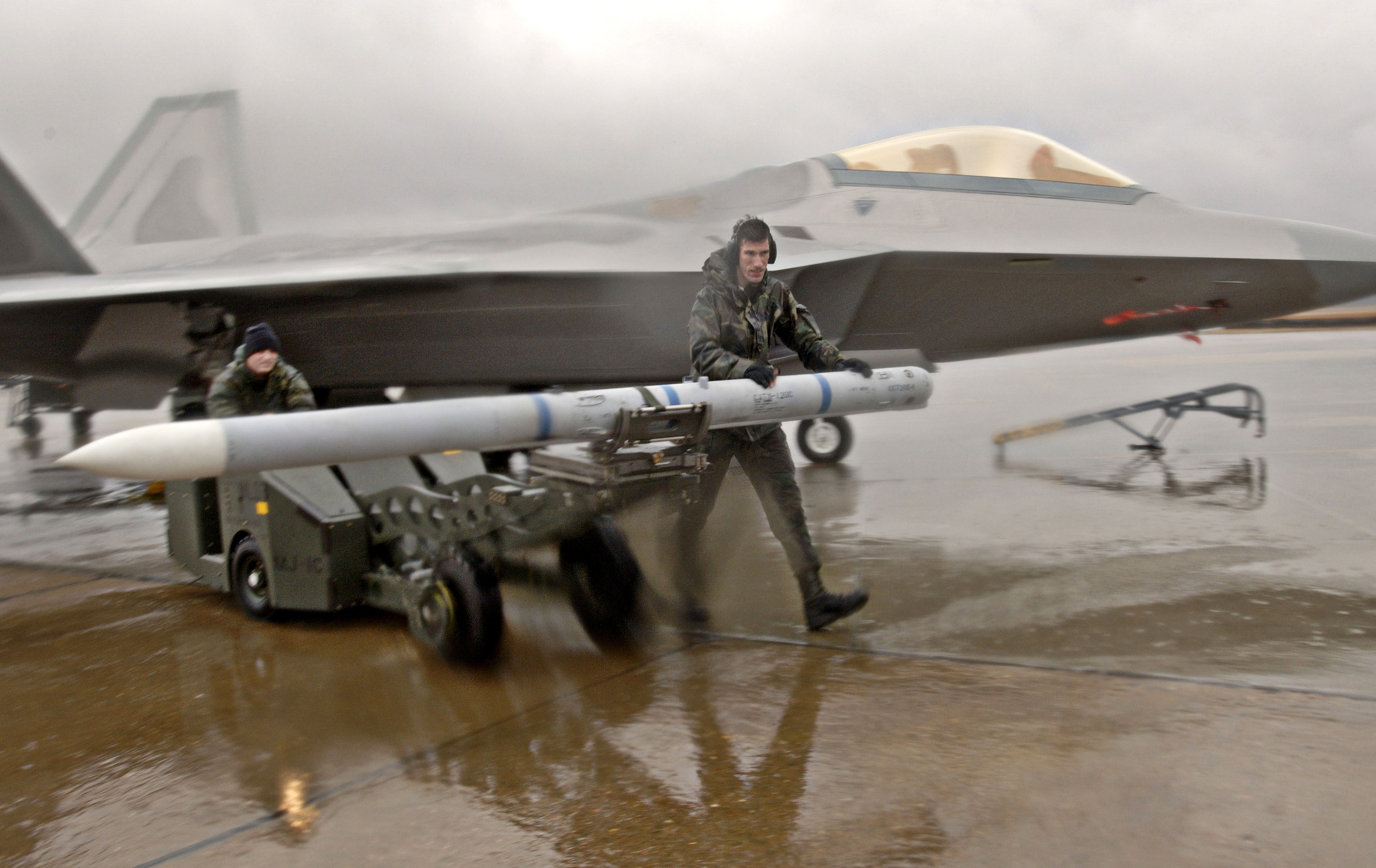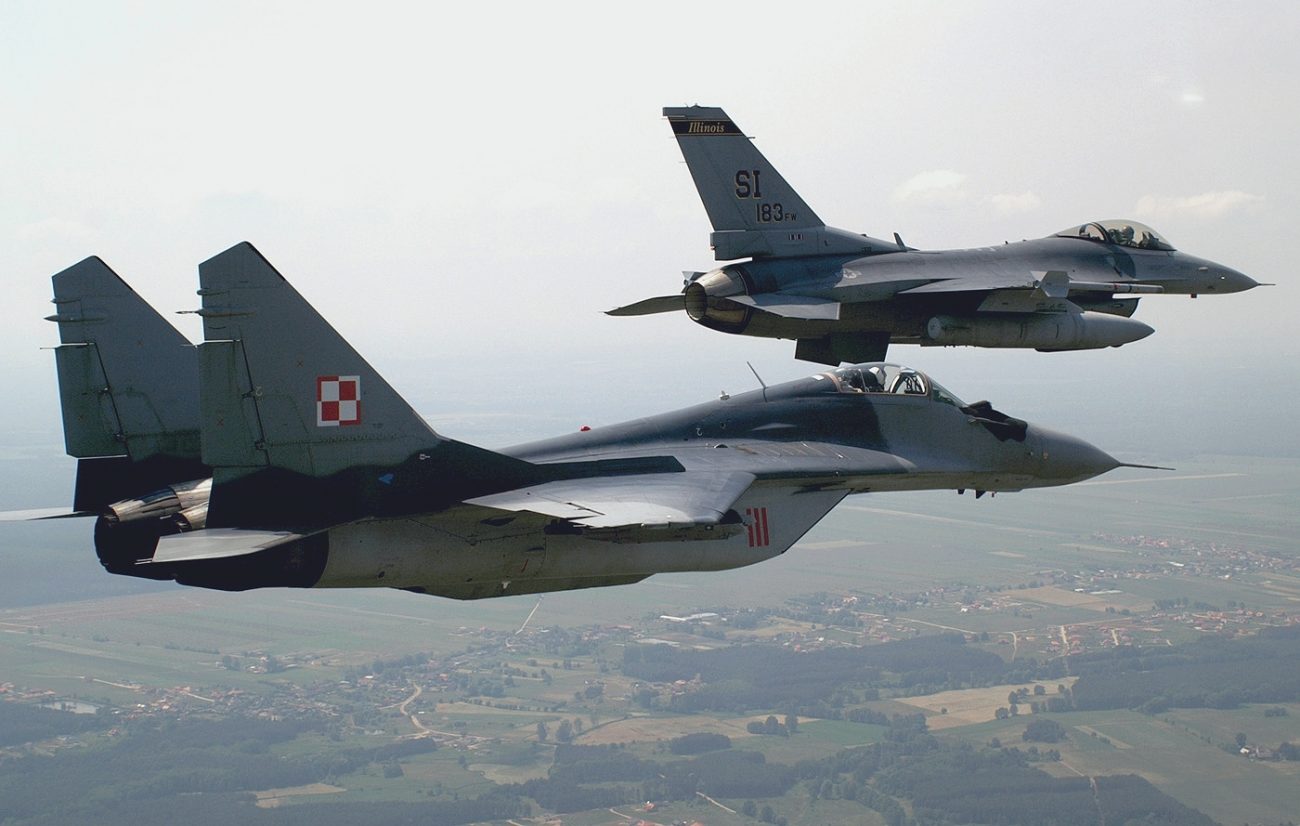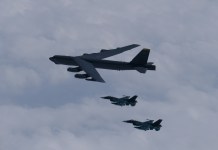Even though the decision to send F-16 fighter jets to Ukraine remains elusive, the United States is reportedly examining whether the air-to-air missiles often mounted on the F-16 Fighting Falcons could be integrated into Ukraine’s Soviet-era warplanes.
In a recent effort to retrofit outdated platforms with modern capabilities in preparation for what is anticipated to be a bloody spring, the US military is looking into the feasibility of integrating sophisticated Western air-to-air missiles with Ukraine’s fighter jets, Politico reported.
The report, which cited two anonymous defense department officials and another person involved in the discussions, stated that officials are considering the possibility of mounting AIM-120 advanced medium-range air-to-air missiles on Ukraine’s existing MiGs.
These reports come when Ukrainian officials have intensified cajoling US lawmakers to send modern, combat-hardened F-16 fighter jets. The EurAsian Times recently reported that two Ukrainian fighter pilots were undergoing training assessment in the United States.
The Ukrainian Air Force operates archaic Soviet-era fighter jets, often downed by Russian warplanes conducting stand-off attacks from their airspace using long-range air-to-air missiles.
Even though neither side has established air superiority, Kyiv needs modern air capability to take on the advanced and numerically superior Russian Aerospace Forces (VKS).

This is where the idea of integrating Soviet-era jets with AIM-120 missiles comes in. If the project succeeds, the US will provide Ukrainian aircraft their first capacity to launch these advanced air-to-air missiles.
The Ukrainian military has already received AIM-120s for use as surface-to-air missiles, and it will be able to take advantage of the supply lines already in place for those weapons.
The US has also delivered air-to-ground missiles, such as the AGM-88B High-speed Anti-Radiation Missile, which can be mounted on Ukraine’s MiG fighters and used against ground targets such as radars and air defense systems.
On top of that, the Pentagon has also supplied the Joint Direct Attack Munition (JDAM), which transforms air-launched weapons into smart bombs.
However, integrating the AIM-120s with MiGs would mark the first time the US makes air-to-air missiles available for firing from aircraft. However, as straightforward and ambitious as the US plan and examination is, it is also full of challenges, and the experts believe it could be too good to be true.
Moreover, western and Ukrainian intelligence officials have warned that Russia is already gearing up for a massive spring offensive. It is unlikely that the US would be able to equip Ukrainian fighter jets with AIM-120s, often fitted with newer-generation warplanes of the US Air Force, including the fifth-generation F-35 stealth fighter jet.
Herculean Task
A Pentagon officer and another individual with firsthand knowledge of the project told Politico that the integration process is complicated. The sources said that the missile must not only be physically mounted to the aircraft, but it must also communicate with the aircraft’s radar.
The missile is guided until it is close enough to the target before being fired by the aircraft radar. The fundamental issue is that the missile and aircraft cannot communicate with one other since the American and Soviet systems are so dissimilar.
The military is working on: “How do you mount this thing? Can you get all the electronics in the aircraft to talk to this thing that wasn’t meant to be launched?” said one of the officials in the US Department of Defense (DoD).

“We are in regular contact with Ukrainian leaders, and we’ll continue to consult closely with Ukraine on their security assistance needs — both near and longer term,” said Lt. Col. Garron Garn. “Our focus will continue to be on providing Ukraine with real combat capability to enable them to defend their country, but for operational security reasons, we won’t discuss what initiatives we may or not be undertaking in this effort.”
Further, it needs constant connection with the launching aircraft to be particularly effective over longer distances. However, the combat jets of Ukraine lack the range of Soviet-designed radars to fully use the AIM-120’s range, as previously highlighted by a Ukrainian pilot in The War Zone.
Military expert and a senior fellow at the Institute of Peace and Conflict Studies (IPCS), Abhijit Iyer Mitra, told EurAsian Times: “It can be done, but it is not a rapid project, and it will likely take several years to do. The entire computer framework would have to be changed and require fitting wiring specific to the AIM-120 AMRAAM onto Ukrainian fighters like the MiGs and the Sukhois.
“It is not just the case of integrating the missile with the electronics of these warplanes; it is also the fact that they need tramps for the missile racks of the Ukrainian fighter jets that must be compatible with the notches on the missile.
“They will fabricate an interface and determine how the information will flow. There are all sorts of problems and complications associated with it, and it will take at least 4-5 years to make it operational, and then all the testing for compatibility will have to be done.”

Having said that, if the US Air Force figures out how these AMRAAMs could be mounted on Ukrainian jets quickly, the missiles will be a powerful tool for the Ukrainian Air Force to engage Russian aircraft and helicopters.
Earlier, there were reports that the Russian Air Force had amassed combat helicopters and fighter jets along the Ukrainian border, indicating that an air raid could be imminent. However, if the Ukrainians are armed with AIM-120s, such aerial attacks could be thwarted.
With its substantial range, an active radar missile would seriously threaten Russian aircraft entering the combat zone. Air operations near the front lines would be significantly hampered. Additionally, the AMRAAM could shoot down drones and cruise missiles at low altitudes.
- Contact the author at sakshi.tiwari9555 (at) gmail.com
- Follow EurAsian Times on Google News





